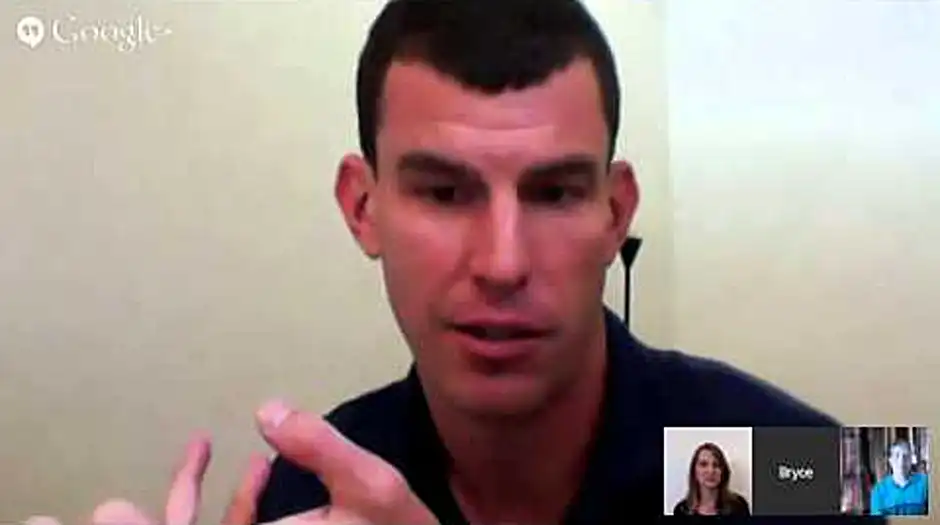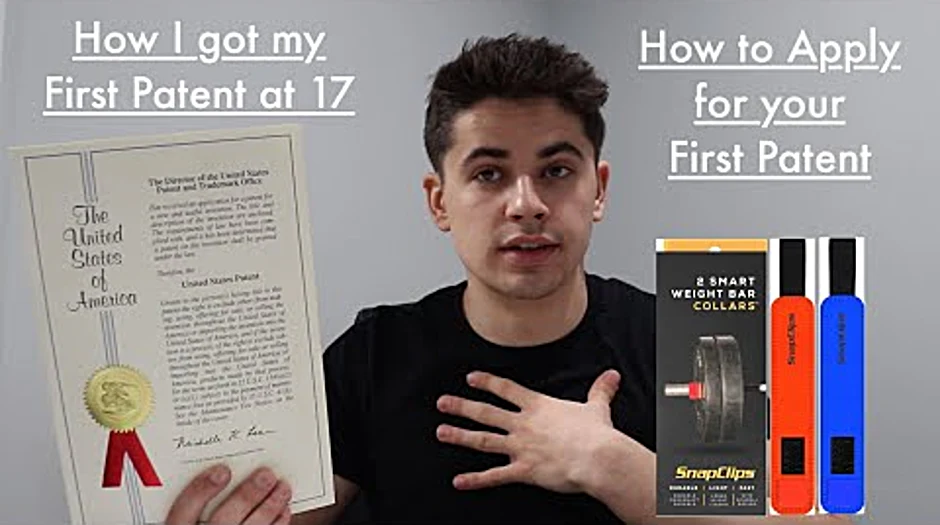How to patent an idea in michigan [Real Research]
Table of Contents
- How much is a patent in Michigan?
- How do you sell an idea to a company without them stealing it?
- What can and Cannot be patented?
- Can I patent my startup idea?
- What all things can be patented?
- What makes an idea patentable?
- What types of inventions are not patentable?
- Can you sell a patented product?
- Can you sell your patent?
- What percent of patents make money?
- Is having a patent a big deal?
- How much does it cost to get an idea patented?
- Can you patent something and not sell it?
- How do I patent an idea myself?
- What are the 3 requirements needed to get a patent?
- Can you patent an idea without a prototype?
- How long is a patent good for?
- Is getting a patent worth it?
- When should I patent my idea?
- How can I patent my idea for free?
Last updated : Sept 27, 2022
Written by : Tiny Shuhi |
Current |
Write a comment |
How much is a patent in Michigan?
According to the United States Patent and Trademark Office (USPTO), the basic cost to file a patent application is $300. However, if you are a small entity, the price is $150, and the micro entity fee (for an individual) is just $75.
How much does it cost to get an idea patented?
A patent attorney will usually charge between $8,000 and $10,000 for a patent application, but the cost can be higher. In most cases, you should budget between $15,000 and $20,000 to complete the patenting process for your invention.
How do I patent an idea myself?
- Keep a Written Record of Your Invention. Record every step of the invention process in a notebook.
- Make Sure Your Invention Qualifies for Patent Protection.
- Assess the Commercial Potential of Your Invention.
- Conduct a Thorough Patent Search.
- Prepare and File an Application With the USPTO.
What are the 3 requirements needed to get a patent?
Under U.S. patent law, an invention is patentable only if it meets the following four requirements, which are discussed in more detail below: The invention must be statutory (subject matter eligible) The invention must be new. The invention must be useful.
Can you patent an idea without a prototype?
Many inventors wonder if they need a prototype prior to patenting an invention. The simple answer is “no'. A prototype is not required prior to filing a patent application with the U.S. Patent Office. While prototypes can be valuable in developing your invention, they can also be costly.
How long is a patent good for?
Patent protection is granted for a limited period, generally 20 years from the filing date of the application. Is a patent valid in every country? Patents are territorial rights.
Is getting a patent worth it?
In some industries, patents are absolutely critical. But in far more they are not. It's a well-known fact that a vast majority of patents are worthless. Around 97% of all patents never recoup the cost of filing them.
When should I patent my idea?
Under U.S. patent law, you must file your patent application within one year of the first offer to sell your invention, or within one year of your first public use or disclosure of your invention. This means that you must determine the first offer to sell date, or the first public disclosure date.
How can I patent my idea for free?
There are two ways you can actually patent an invention for free, sort of. If you cannot afford an agent or attorney, look to the Patent Pro Bono Program or the Law School Clinic Certification Program, both provided by the USPTO. The Patent Pro Bono Program pairs registered patent agents or attorneys with inventors.
How do you sell an idea to a company without them stealing it?
You can sell an idea to a company without a patent. You need a way to stop them from stealing the idea from you. One way to do that without a patent is with a nondisclosure agreement, aka NDA. The NDA would limit the company's ability to use your idea without paying you for it.
What can and Cannot be patented?
- something that can be made or used (capable of industrial application)
- new.
- inventive – not just a modification to something that already exists.
Can I patent my startup idea?
Can We Obtain a Patent for Startup Idea only? No, but a Patent can be attained for an invention derived from an idea. Moreover, the innovation should comprise a description of the invention and be attached to the Patent application.
What all things can be patented?
Nearly anything can be patented. Machines, medicines, computer programs, articles made by machines, compositions, chemicals, biogenetic materials, and processes, can all be the subject matter for a United States patent.
What makes an idea patentable?
To be patentable, the invention must be statutory, novel, useful, and nonobvious. Certain requirements, such as novelty and non-obviousness, may involve conducting a preliminary patent search with the assistance of an attorney or agent.
What types of inventions are not patentable?
- Discovery, scientific theory, or mathematical methods.
- Nonfunctioning products.
- Scheme, rule or method for performing a mental task.
- Informative presentations.
- Medical/veterinary procedures and methods.
Can you sell a patented product?
The U.S. Supreme Court in a recent ruling has opined on the rights of a purchaser to use and resell patented products. The patent system give the patent owner the right to exclude others from making, using, and selling the patented invention, for the life of the patent.
Can you sell your patent?
A patent is an important document which grants ownership to an invention. However, simply owning a patent won't generate a dime for the inventor. To profit from your idea, you must sell the patent, license usage rights, or market the product yourself.
What percent of patents make money?
Analysts report that more than 95% of patents are worthless-- not because patents as a class are worthless, but because companies fail to understand one simple principle that makes patents powerful. To understand, it is helpful to take a step back and first consider the differences between strong and weak patents.
Is having a patent a big deal?
Patent protection can prevent someone from profiting off of the hard work of the inventor. Without patent protection, the inventor does not have a protectable right. Patent protection provides inventors access to the courts to enforce their rights against an infringer.
Can you patent something and not sell it?
No. You are not required to obtain a patent in order to sell a product or service embodying your invention. Many products and services are sold that are not patented. A U.S. patent provides the right to stop others from making marketing, selling, or importing your invention in the United States.

Check these related keywords for more interesting articles :
How to patent an app idea uk
How to register a trademark in taiwan
Trademark register status
How to brand your real estate business
Intellectual property policy statement
How to take copyright off photos
How to copyright educational materials
How to pay us patent maintenance fees
Patent expiry of rituximab
Trademark registration oklahoma
How to check registered brand names in pakistan
Intellectual property crime simple definition
How to get a patent number
How to copyright a song in malaysia
Does copyright protect inventions
Did you find this article relevant to what you were looking for?
Write a comment
Comment by Sal Swietoniowski
what's up guys so today I'm going to be talking about how I got my first patent at 17 and also I'll be explaining how you can apply for your patent and get a patent on your product so this is what we're talking about a United States utility patent and I'm gonna be talking about the way I did it and I'll be only talking about what I know so I'll show it to you here this is the patent that was issued you could see there's a barbell there and this is the product that it was issued on the snap flips barbell collars so I'm gonna tell you about how I got my patent so the process that I follow - then I'll explain step by step what you would do to do the same thing so I started off with not a lot of money had like two hundred bucks and I was in high school and had this idea of a barbell collar that you could use to hold your weights in place so I had made some prototypes this is one of the prototypes here and I thought it was a good idea so wanted to file a patent on it and I wanted to file a provisional patent because a provisional patent is basically a time holder and it says hey I'm here I have this idea and I want to file a patent for it but I'm not quite ready yet so filing a provisional patent sets your spot in line and then you have 12 months from that date to actually file a real patent that can protect your product or idea so the way that I did it was I got some software online it was 150 bucks at the time now it's only 99 dollars for a year so it's called patent wizard put it up right here and you go on patent wizard you download the software and you basically it asks you a bunch of questions like extended response questions about your idea how you make it what it looks like how it works you fill in all that stuff and then I don't know after a couple hours of doing it it prints out your patent for you and at the time I printed it out I mailed it into the USPTO the United States patent trademark office and my spot was saved in line now what you'd actually do is you would make an account online download it to your computer from the software and submit it online if you send it in through the mail now they actually charge you an extra two hundred bucks so it's not worth it so now you would just do it online anyway after I filed my provisional patent I started developing the product more making sure that there was a need for this type of product making sure that people wanted to buy it and I did find that people wanted to buy it so at that point I said okay we need to file an actual utility patent on this product I found some lawyers that were really nice and wanted to work with me and we went through a whole I mean it was a couple months turning our provisional patent that I wrote which I wouldn't necessarily recommend writing your own patent your own provisional patent but I didn't have another option at the time so that's what I did so we took my provisional patent and then we turned it into a utility patent filed it in the office and we actually got it it usually takes between one and three years to get your utility patent issued we filed for expediting the whole patent process it was we paid $6,000 for it looks like it's only a thousand to two thousand dollars now so must have gotten cheaper and what that does is instead of waiting between one and three years it gets done in one year so provisional patents one year and then you file your utility patent after that and in one year you have either an answer yes we have a pet we'll give you a patent on this or no we're not going to give you a patent on this because someone's already made something like this before so after I think it was like eight months or something we had heard back they said we think that you could get a patent on this but you there's some stuff that you would need to change in order to get your patent so we made a couple tweaks to the patent and then it finally got issued we paid some more fees and then we were finally issued a United States utility patent which protected the product and we were basically ready to launch and start selling the product on the market so that's how I did it super quick little you know story about it there's a lot more to it but now I'm going to talk about how you can actually do it so the first step in the process when you're trying to file your patent and the way that I'm going to do this is I'm gonna tell you to file a provisional patent first if you want to go directly in the utility patent more power to you you do that but this is how I did it so first you do a patent search you could go on uspto.gov and you search patent search and then you basically type in descriptive words about what your product your idea or whatever you're trying to patent what it is and you look it up you you look at there you see if anyone has made something or gotten a patent on something similar look on Google see if there's anything similar to what you're doing if you find something similar to what you're trying to patent you're not gonna be able to patent it because someone's already thought of it before in order to get a patent you have to think of something completely new that no one has created before it's never been publicly posted anywhere and no one knows how to do it you're you're the first one that's making this thing so that's the big thing you need to do a patent search and if that checks out and you don't find anyone that's made anything similar then you can go on to the next step you need to figure out what kind of patent you're gonna file you file your provisional first then 12 months past now you're getting ready to actually file your real patent what you need to decide is is it going to be utility is it going to be a design is it going to be a plant patent if it's a product or a new way to do something it's most likely going to be a utility patent so we're gonna be talking about utility patents then what where do you want to file a patent is there just gonna be in the US or is it going to be globally I don't know about filing patents globally so I'm not going to talk about it I'm just going to talk about filing a patent in the US it's gonna be a non provisional patent because you've already filed your provisional patent and the twelve months has passed and it's come time you know maybe like 11 months is passed and it's now it's time to file your actual patent your non provisional utility patent so then you need to decide are you going to expedite it or are you not going to expedite it if you expedite it it's going to get done in one year if you don't expedite it it can still get done in one year but it could take up to three years so that's a choice that you're gonna have to make which comes with a fee the fee is between 1,000 and 2,000 dollars - depends on if you're considered a micro entity or a small entity then who should file it so for the provisional patent I filed that by myself if you have the cash it's probably better to have an actual lawyer file your provisional - but if you don't have the cash and you don't have another option file the provisional yourself but once you get to the actual non provisional once you get to your u
Thanks for your comment Sal Swietoniowski, have a nice day.
- Tiny Shuhi, Staff Member
Comment by emorypeOpporyg
Thanks for this interesting article
Thanks emorypeOpporyg your participation is very much appreciated
- Tiny Shuhi
About the author

Tiny Shuhi
I've studied social change at Tougaloo College in Tougaloo and I am an expert in human biology. I usually feel listless. My previous job was crop workers supervisor I held this position for 18 years, I love talking about calligraphy and sketching. Huge fan of Jesse Eisenberg I practice rope climbing and collect petroliana.
Try Not to laugh !
Joke resides here...
Tags
How do you sell an idea to a company without them stealing it
What can and Cannot be patented
Can I patent my startup idea
What all things can be patented
What makes an idea patentable
What types of inventions are not patentable
Can you sell a patented product
Can you sell your patent
What percent of patents make money
Is having a patent a big deal
How much does it cost to get an idea patented
Can you patent something and not sell it
How do I patent an idea myself
What are the 3 requirements needed to get a patent
Can you patent an idea without a prototype
How long is a patent good for
Is getting a patent worth it
When should I patent my idea
How can I patent my idea for free
 : 8179
: 8179

